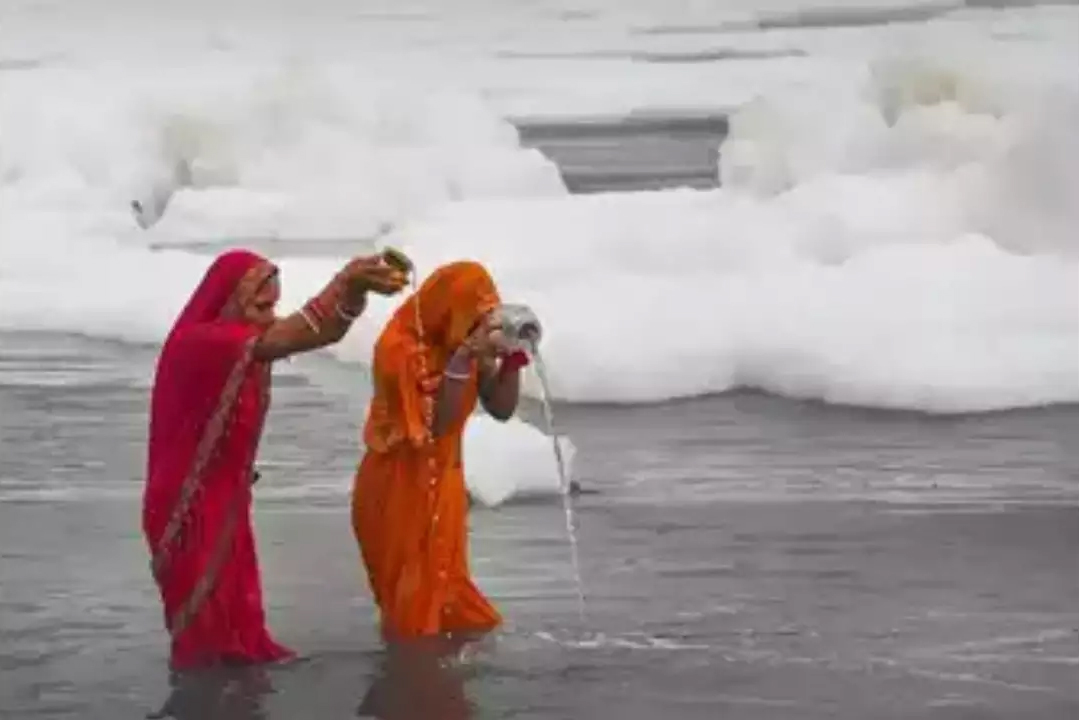
In a recent ruling, the Delhi High Court denied permission for the performance of Chhath Puja on the banks of the Yamuna River. This decision was made in light of the significant pollution levels in the river, which have rendered the water unsafe for any form of direct human contact, particularly immersion or ritual bathing. While this decision impacts many who observe the traditional festival, the High Court emphasized the need to prioritize public health over religious practices in contaminated environments.
Table of Content:-
Why the High Court Denied Permission
The ruling came in response to a Public Interest Litigation (PIL) that challenged the prohibition on performing the ritual in the Yamuna River. The petitioner argued for allowing devotees to perform the puja on the riverbank, despite the hazardous condition of the water. However, the court firmly upheld the restriction, pointing to the alarming level of pollution in the river. According to the court, immersion in the Yamuna poses a substantial health risk due to contaminants and toxic foam present in the water.
Chief Justice of the Delhi High Court highlighted the potential health dangers associated with immersion, sharing an incident in which an individual who had recently bathed in the river suffered adverse health effects severe enough to require hospitalization. This incident underscored the pressing need to prevent people from engaging in activities that could result in direct exposure to the toxic river water.

Health Risks Linked to Yamuna Pollution
The Yamuna River, particularly the stretch passing through Delhi, has long been plagued by pollution from industrial waste, untreated sewage, and urban runoff. These contaminants, combined with the low flow rate in certain areas, create conditions that are conducive to toxic foam formation on the water's surface. This foam, which is often visible along the banks, is filled with harmful chemicals, including ammonia and phosphates. When individuals come into direct contact with these substances, there is a high risk of skin irritation, respiratory issues, and other health complications.
The court’s decision acknowledged the dangerous impact of pollutants and made it clear that public health cannot be compromised in the name of ritual practices, especially when the situation involves exposure to such severe contaminants. The High Court thus emphasized the need for a clean and safe environment for religious observances, underscoring the gravity of the Yamuna's pollution crisis.
Alternative Arrangements for Chhath Puja
To ensure that devotees can still celebrate Chhath Puja safely, the court noted that nearly 1,000 alternative locations had been designated across Delhi. These sites have been set up with safety and convenience in mind, enabling devotees to gather without exposure to the hazardous conditions present in the Yamuna. This measure provides a compromise that respects religious traditions while prioritizing the health and safety of the public. The High Court has encouraged devotees to make use of these designated sites to avoid potential health risks.
Also Read: WHO Activates Global Health Emergency Corps To Fight Mpox Spread
Environmental Crisis and the Future of Yamuna River
The Yamuna River's pollution is not only a problem for those celebrating Chhath Puja but reflects a broader environmental crisis. Addressing the contamination in the river is crucial, not only for safeguarding public health during festivals but also for preserving the ecological integrity of one of India’s most iconic rivers. Cleaning efforts in recent years have been made, but substantial progress is still needed.
Long-term solutions require comprehensive policies to tackle industrial discharge, improve sewage treatment, and reduce the inflow of pollutants. Until these actions yield visible improvement, restrictions like those on riverbank gatherings during festivals may remain necessary to protect public health.
Bottomline: A Necessary Step Towards Safer Celebrations
While the court’s decision to deny Chhath Puja observances on the Yamuna banks may disappoint some devotees, it reinforces an essential message about public safety and environmental awareness. By choosing health over ritual immersion in the contaminated river, Delhi is taking a step towards promoting safe and sustainable traditions. The focus now must shift to long-term solutions for cleaning the Yamuna, so that future celebrations can take place in a river free of pollution, and all communities can observe their rituals without the risk of adverse health effects.
Also watch this video
How we keep this article up to date:
We work with experts and keep a close eye on the latest in health and wellness. Whenever there is a new research or helpful information, we update our articles with accurate and useful advice.
Current Version